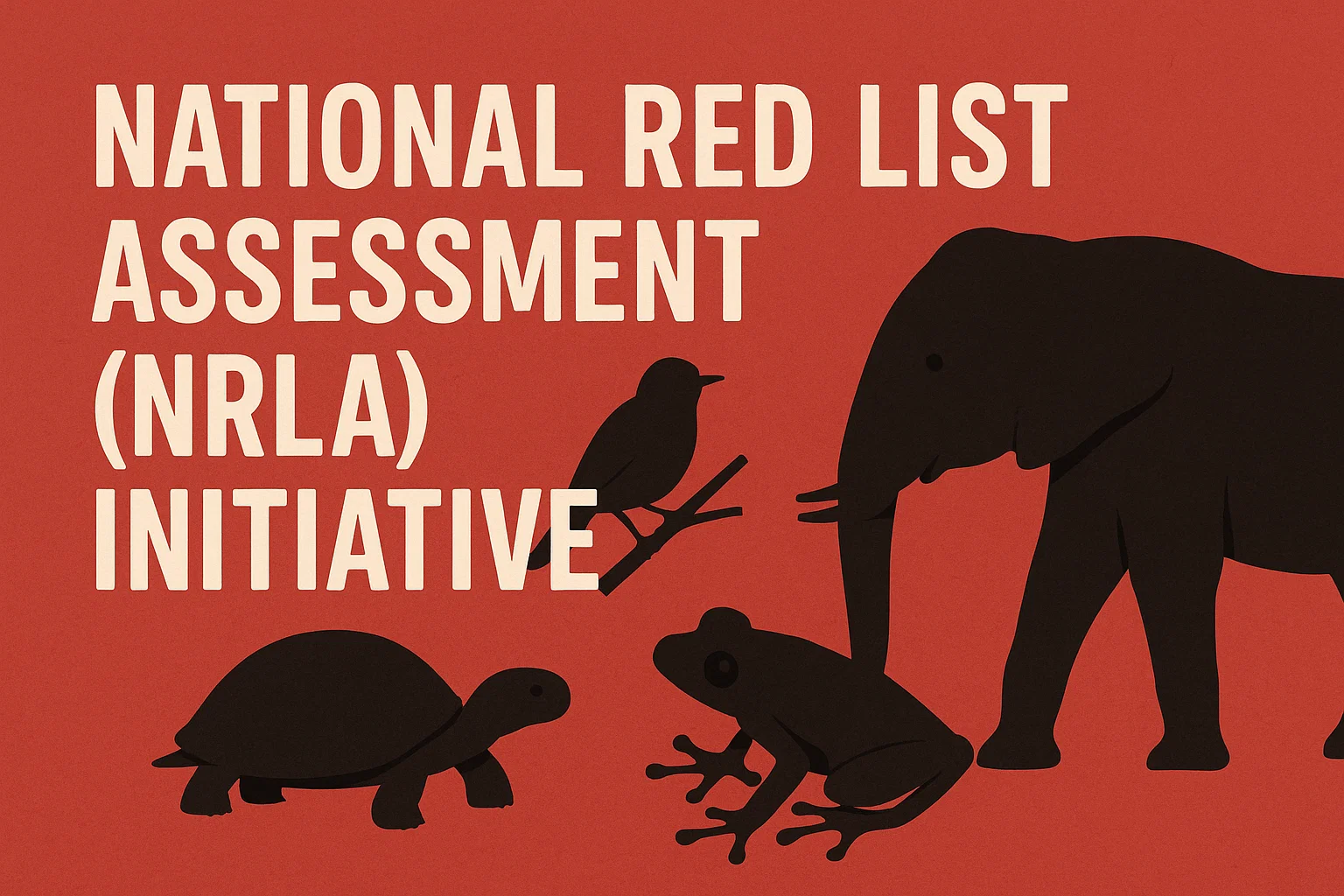National Red List Assessment (NRLA) Initiative
India has launched the National Red List Assessment (NRLA) to scientifically assess species extinction risks, align with IUCN standards, and meet global biodiversity commitments under the CBD and GBF.
Introduction
India has unveiled the National Red List Assessment (NRLA) at the IUCN World Conservation Congress in Abu Dhabi, a landmark step towards systematically assessing the country’s biodiversity. The initiative reflects India’s commitment to the Convention on Biological Diversity (CBD) and the Kunming–Montreal Global Biodiversity Framework (GBF), both of which emphasise halting biodiversity loss and promoting sustainable use of natural resources.
What is the National Red List Assessment?
The NRLA, launched on 10 October 2025, is a comprehensive national programme designed to scientifically assess the conservation status of India’s flora and fauna. It aims to bring India’s biodiversity evaluation process in line with IUCN Red List standards, ensuring international compatibility in identifying species at risk of extinction.
The initiative is being led by the Ministry of Environment, Forest and Climate Change (MoEFCC), with two key scientific bodies — the Zoological Survey of India (ZSI) and the Botanical Survey of India (BSI) — serving as the nodal agencies. A major outcome of this initiative will be the creation of National Red Data Books by 2030, which will consolidate species assessments across all biogeographic zones.
Why is the NRLA Significant?
Biodiversity Richness and Endemism
India is one of the world’s 17 megadiverse countries, hosting around 8% of global plant species and 7.5% of animal species. Many of these are endemic, found nowhere else on Earth. A national red-listing exercise is crucial to track and protect this unique natural heritage.
Fulfilling Global Commitments
The NRLA directly contributes to India’s obligations under the CBD and the Global Biodiversity Framework (GBF). It facilitates monitoring of biodiversity loss and strengthens accountability towards Target 4 of the GBF — ensuring that all species are managed sustainably and extinction risks are reduced.
Evidence-Based Conservation
Unlike regional or fragmented surveys, the NRLA promotes a scientifically robust and standardised national approach. It enables policymakers and conservationists to prioritise species, allocate resources effectively, and design targeted threat mitigation strategies.
Policy Integration and Legal Support
The NRLA operates under the umbrella of the Wildlife (Protection) Act, 1972, which was amended in 2022 to align with CITES listings. This integration reinforces the legal framework for species protection and ensures that red-listed species receive institutional backing.
Knowledge Integration
By combining traditional ecological knowledge with modern scientific research, the NRLA bridges the gap between indigenous wisdom and contemporary conservation practices. This holistic approach enhances local participation and contextual understanding of species dynamics.
Challenges Ahead
Despite its vision, the NRLA faces several hurdles that could affect its full-scale implementation:
-
Taxonomic Gaps and Expertise Shortage – India faces a deficit of trained taxonomists and field researchers, particularly for less-documented groups like invertebrates and lower plants.
-
Data Deficiency – A significant portion of species remains Data Deficient, limiting the accuracy of risk assessments.
-
Coordination Complexity – Effective collaboration across institutions demands robust data-sharing platforms and institutional synergy.
-
Funding and Resources – Sustained investment in training, infrastructure, and field surveys is vital to ensure the NRLA’s continuity until 2030 and beyond.
-
Environmental Pressures – Climate change, habitat loss, pollution, and invasive species are accelerating biodiversity decline faster than assessment efforts can keep up.
Contribution to Global Goals
The NRLA directly supports Sustainable Development Goal (SDG) 15 – Life on Land, by promoting the conservation and sustainable use of terrestrial ecosystems and preventing species extinction. It also indirectly contributes to SDG 13 (Climate Action) by enhancing ecosystem resilience and SDG 14 (Life Below Water) by influencing freshwater and coastal biodiversity management.
Conclusion
The National Red List Assessment marks a transformative phase in India’s conservation journey. By standardising biodiversity assessments and aligning national efforts with global frameworks, it positions India as a responsible steward of planetary life. While challenges in data, expertise, and funding persist, the NRLA offers a scientific and ethical roadmap for ensuring that India’s rich biodiversity continues to thrive amid the pressures of development and climate change.
Subscribe to our Youtube Channel for more Valuable Content – TheStudyias
Download the App to Subscribe to our Courses – Thestudyias
The Source’s Authority and Ownership of the Article is Claimed By THE STUDY IAS BY MANIKANT SINGH





